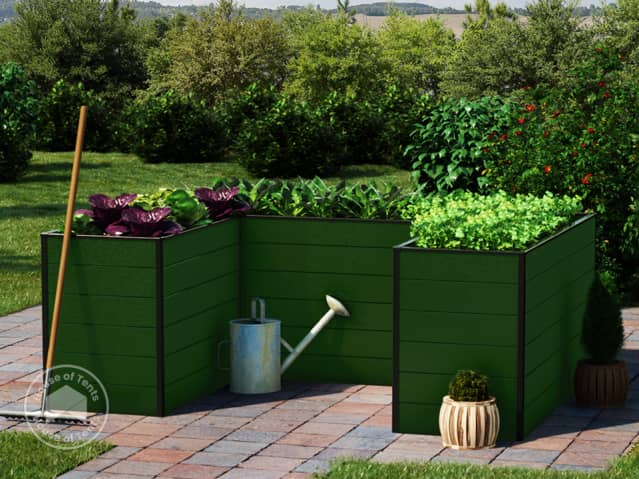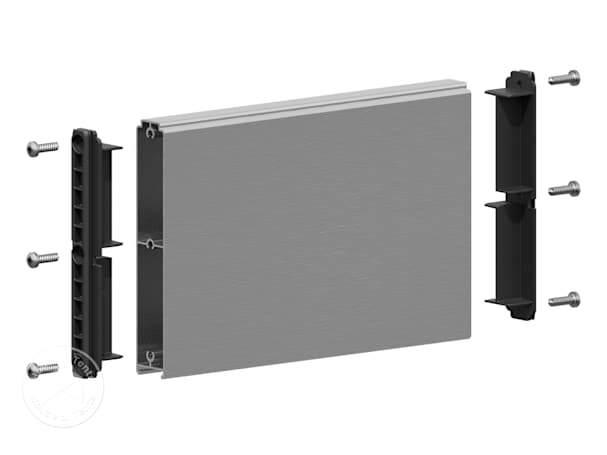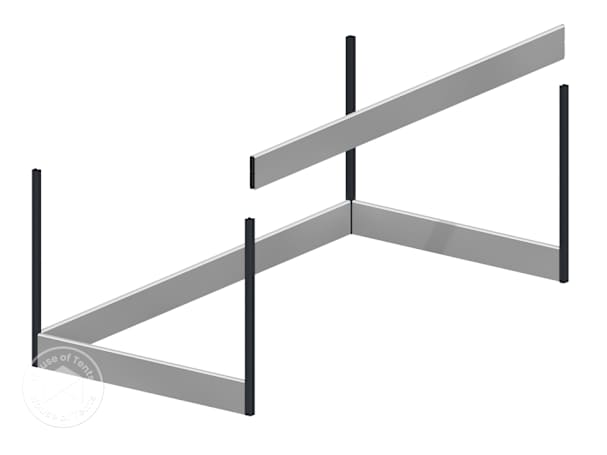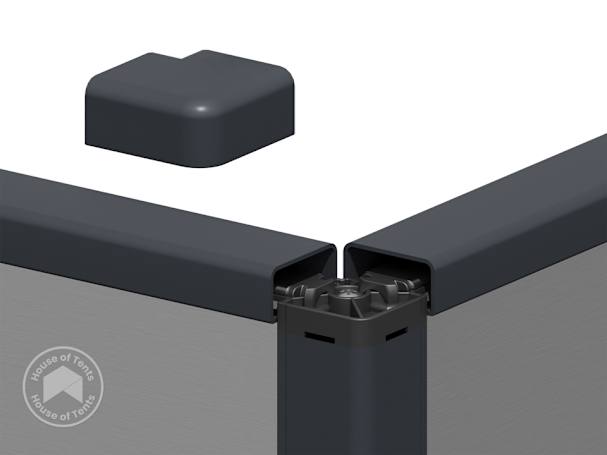
- Height 77 cm
- Rectangular
When it comes to building a raised garden bed yourself, there's a range of options, ranging from time-intensive to remarkably straightforward. Many gardening enthusiasts opt for a DIY raised garden bed, using materials you can find at local hardware stores. One particularly popular choice is a raised bed kit made of aluminum. Aluminium is a fantastic option for gardeners due to its lightweight yet durable nature, and its non-toxicity, ensuring that fruit and vegetables aren' contaminated by the vegetable bed materials. In this guide you can discover the advantages of a ready-to-build kit, investigate options for building a rasied bed from scratch, and learn valuable tips for building a raised garden bed.

Opting for a raised garden bed kit offers several advantages over constructing one with your own materials. Firstly, convenience stands out as a key benefit. Our aluminium garden bed kits come with pre-cut and pre-drilled components, streamlining the assembly process. This eliminates the need for precise measurements and cutting tools. Installation with a kit is therefore considerably quicker and more accessible, especially for those with limited DIY experience.
The materials used in our raised garden bed kits are specifically chosen for their durability and resistance to weathering, ensuring a longer lifespan for your garden bed. While DIY projects allow for customization, our raised garden bed kits benefit from the combination of perfect-fitting materials and parts that create a durable, heavy duty planter.
The kits also feature sleek and visually appealing materials, which contribute to the aesthetic of the garden. The high-quality aluminium garden beds add a touch of modernity to your garden space, with a range of colours on offer. You just need to choose the one that best suits your garden.
We have a wide range of sizes, with kits in two different heights - either 390 mm half-height models or 770 mm as standard. You can build every raised bed in our online shop yourself. You will be provided with step-by-step instructions detailing the assembly. In addition, you can find a video that shows you each of the assembly steps. Below we outline the key steps for our easy-to-build garden beds.
Having found a suitable place in your garden, start by attaching the plastic sliders to the planks. To do this, take the respective planks and fasten the plastic sliders as tightly as possible. Once they are all attached to the planks, the next step is to attach the clamping plates to the bottom of the corner posts. Use the appropriate screws supplied here too.

Continue by inserting the planks into the corner posts. First insert the plank for one short side and then for one long side in turn - until all four corners have been clipped on. Once the bottom rectangle is complete, continue the same process all the way to the top. Once all the planks have been inserted into the corner posts in the last step, you can clip on the handrails.

Once the handrails have been clipped on, the final touches can be carried out. All you have to do is screw on the clamping plates at the top of the corners - and you're done! As you can see, the instructions are very simple, so the assembly is done quickly!

When building a raised garden bed from scratch, start by selecting durable and weather-resistant materials. If using timber, cedar and redwood are good options. Ensure the bed is at least 6-12 inches deep to accommodate root growth, and think about adding a layer of landscape fabric at the bottom to prevent weeds. The estimated cost to build a raised garden bed yourself can vary based on size, materials, and location, but a modest 4x8 foot bed can typically be constructed for around £200, including timber, screws, and soil.
When building a vegetable garden with railway sleepers, it's crucial to choose either pressure-treated wood or naturally durable timber to withstand outdoor conditions. Ensure the sleepers are securely fastened at the corners and consider adding a protective layer between the wood and the soil to enhance longevity and prevent wood decay.
When constructing a raised garden bed with breeze blocks, ensure a stable foundation by placing the blocks on a level surface. It's important to leave drainage gaps in the blocks to prevent waterlogging. Where the soil depth exceeds 20-30 cm, mortar may be required to keep the concrete blocks in place.
Corrugated iron is generally not recommended as a raised garden bed building material, due to its susceptibility to rust. If you do choose to use corrugated iron, adequate drainage is crucial. You will need to drill drainage holes in the iron. You should also add a layer of landscape fabric between the metal and soil to prevent direct contact and rusting over time.
Constructing a vegetable garden on a slope requires careful planning to prevent soil erosion and ensure proper water drainage. Building terraced beds with tiers is the perfect way to match the slope, allowing for even water distribution and minimizing runoff. On uneven ground, anchor the beds securely to prevent soil movement, and choose plants that are suitable for the specific conditions of a sloped garden.
When you build a raised garden bed next to a garden fence or wall, ensure adequate distance to allow for air circulation and prevent moisture buildup that could harm both the plants and the structure. You should also select plants that match the light and moisture conditions of the bed's location, considering the potential shading effect of the nearby fence or wall.
Grass should be removed from the area on which the raised bed will stand. When clearing the grass, ensure that you create a level surface for the bed. Consider placing a layer of cardboard or landscaping fabric at the bottom to suppress grass and weeds, and fill the bed with a nutrient-rich soil mix for optimal plant growth.
While it is possible to place a raised garden bed on a deck, it is essential to assess the deck's load-bearing capacity and address potential water drainage concerns. Opting for a planter box is often a more suitable choice for a deck, allowing for reduced weight and better drainage. Ensure the planter features proper drainage holes and use a lightweight soil mix to avoid imposing excessive weight on the decking.
With a ready-made kit you can enjoy the benefits of growing your own vegetables, fruit or even flowers in your garden. All the better when you can save yourself the hassle of finding the right materials, such as rot-resistant timber and durable fixings, and turn your focus straight to gardening. For advice on how to assemble your vegetable box or specifics relating to the outdoor space, whether your garden, terrace, or allotment, our team of experts are ready and willing to help.
Expert advice
